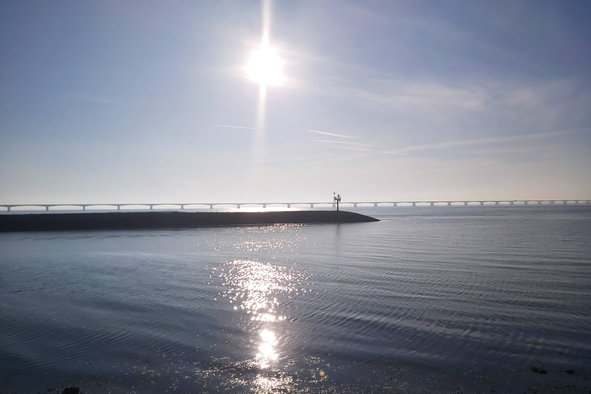The client had been successful in recent years. The business was stable, and the client’s brand was highly appreciated by the customers. However, new competitors were emerging on the market, customers started to consolidate their buying power and margins were under pressure. Status quo was not an option. The leadership team wanted to exploit the energy in the organisation to defend and grow its current market position. The problem was that the clients’ corporate culture was very much ‘top-down’ organised, and employees were afraid to take initiative.
We initiated a change program on three levels: the executive team, the middle management and the employees. We brought people together to express their emotions and insights and encouraged them to take initiatives. We worked with all the people managers to focus on their role as change facilitator. The clients continued the bottom-up approach after the end of our intervention with a dedicated culture project team.
The client had strong local business units operating in each European country. The local business units were close to the market and able to respond quickly to local customer needs. The European management team wanted to encourage collaboration within business units, wherever it made sense. The complexity of the product range and the dispersed manufacturing footprint however, made it difficult to realise. The company culture did not encourage collaboration.
We worked with a central multi-disciplinary team on a new business operation model to encourage synergies and collaboration when and where it made sense. Representatives of local business unit worked together to identify areas of collaboration and improvement. Personal relations were established, which were instrumental for informal communication. We established a common team approach to ignite collaboration. The central initiative eventually was followed by a pan-European ERP implementation, which embedded the supply chain collaboration.
One customer contact point
The client intended to transform its existing call centre into a multichannel contact centre. Customer satisfaction surveys indicated that there was a need for a central contact point. Through the proliferation of contact points by telephone and email, the customer was unable to find the solution to their problem. Offering one contact point for the customer would greatly improve the customer experience.
We worked with the client’s key stakeholders: the management committee, and the departments to develop a common vision of the one customer contact point. We supported the development and transformation of the new contact centre processes. We trained the customer service representatives in their new role and the use of their new contact centre software. Today the contact centre is a performing front office organisation at the service of the customer.
A client with activities across Europe, decided to bring the country managers together to foster better collaboration. The initiative was driven by the newly appointed European director. Historically the country managers focused on the business success of their geographical areas. The European director wanted to establish more collaboration and knowledge transfer.
We first established trust within the European management team, as many country leaders did not know each other well. We worked on shared values and a common vision of desired leadership. We aligned the team on the challenges in their market and how they could leverage the power of the European network. The European leadership team is now a well-established team, where country managers foster collaboration in a formal and informal way.


Post-merger cultural alignment
The client had grown both organically and through acquisition. The acquired companies continued to operate relatively independent. The management team wanted to integrate the minds and hearts of all members companies into one common objective.
Together with the client project team we worked on a common mission and vision that would inspire and align all member organisations. We worked with each member organisation to prepare a common story. The client now works better aligned, resources and knowledge are shared, and each company understands their contribution to the common objective.
Organisational design of support services and introduction of a New Way of Working
The clients’ support services were dispersed over several internal functional units. The client wanted to set up one central facility organisation to serve the needs of the organisation. The client embarked in digital transformation programs to transfer to a paperless office. The organisation had a rigid organisational culture, with weak people management skills. The client also identified several opportunities to collaborate intensely with other similar organisations.
We designed a new central facility organisation and led the transformation of towards a new facility organization. We involved teams from across the organisation to support the change and transformation process. We introduced a New Way of organising work and managing people. We used the momentum of the project to enhance the collaboration and sharing of resources with other third-party organisations. The organisational design initiative led to relocation of the client’s offices to a more flexible workspace, with a vast reduction of office space.
HR Process transformation: redesign before automation.
The client wanted to upgrade its current HR IT infrastructure which was end-of-life and needed to be replaced. The client used the momentum to review HR processes, such as the recruitement and on-boarding process, the employee career process, the training and development process. Smaller tactical processes such as holiday request were simplified and automated.
We supported the client in the transformation project by redesigning the new HR processes. We applied 'redesign before automation'. We involved the HR department in the project, but also the employees who now were able to manage their career through an online portal. The new HR transformation project led to improved internal employee satisfaction.
From Product to Services transformation: establishing a service-dominant logic
In order to counter negative growth of the industry the client wanted to develop value adding services to complement the current product offering. The market for products was under pressure and the margins were thin. Product differentiation was limited and value adding services were the only way to really differentiate. The client was a product focused company, where services were perceived as a add-on, an in most cases given away to the customer for free.
Together with the clients’ team, we set up an innovation team that formulated the key directions for the future. We worked with the management team for formulation of the overall strategy and required organization changes that could foster service-oriented thinking. We stimulated the change initiative towards services which required a different way of thinking. The new service offering was focused at delivering consulting services. The client now successfully develops and delivers value adding services at a fee, instead of giving them away for free.
Knowledge Portal transformation: making knowledge better accessable for the end-user
The client had a responsibility to develop and communicate new legislation towards the healthcare community. Knowledge and information was not easily accessable for the end-user.To increase the accessibility of the information, the client started the development of a web-based knowledge portal. Knowledge and legislation were historically developed is isolated departments and edited by a central communications team.
Together with the client we implemented a new central knowledge management system. Together with the knowledge owners we developed a web-based collaboration tool. We managed the transition towards decentral ownership of content. Today the knowledge portal serves as a critical information source for the healthcare community.
Organisation Network collaboration
The client was an organisation network of public service emergency units. The units were geographically organised with little interaction. The individual members were looking for synergy and the central network organisation to stimulate collaboration within their member units.
We supported the central network organisation in establishing a common goal and identify opportunities for better collaboration. We established the common objective and story. We encouraged interpersonal communication and bonding of the team, both formally and informally. The organisation network now continues to meet and exchange on a regular basis, working on different project cross organisation.

Leading digital transformation
The client’s management team identified the need to embark in a digital transformation program. The client’s customers were demanding a smoother and efficient customer experience. New digital tools were emerging, and the client wanted to understand how these tools could contribute to the efficiency and effectiveness of the organisaiton.The need for a digital transformation roadmap was evident.
Together with the client’s management team we identified the areas where digital technology could add value. We worked with team to identify opportunities and a clear roadmap for the future. Today the client drives all customer engagement processes through their digital channels, with positive impact on customer satisfaction
Unlocking the power of Young Potentials
The client identified the need to develop a group of young potential employees. The development need served both as an accelerator for identifying new projects for growth, as well as for employee retention. The client has recently gone through several changes, with acquisitions and a new corporate logo.
We developed a program to unlock the ideas of the group of young potentials. We created a group bonding atmosphere, where ideas could emerge and develop. We worked on themes such as Market, Customer, Culture, Organisation and Personal Development. We offered personal coaching where needed. At the end of the program each of the young potentials presented their business case of a project to the board of directors. The intensive work during the program, and the exposure to board level, boosted the careers of the young potentials.


Humanizing corporate culture
The client offered critical services to the citizens They identified the need for a people centric cultural transformation. The client identified issues with the performance of the management team, the lack of processes, and an overall sense of unrest in the organisations. Employee satisfaction survey results indicated that there was a sentiment of negative emotions throughout the organisation. Employees did not feel empowered. People management skills were under pressure.
Together with the client’s team we started a program with managers and employees towards a more people-oriented organization. We established the reason of existence (the ‘why’) of the client’s organisation as a common denominator. Input from all levels of the organisation was used to lay the issues on the table and start building a new organisation of trust and respect. Today representatives of all functional areas of the organisation have a voice in articulating constructive ideas for continued corporate culture improvement.